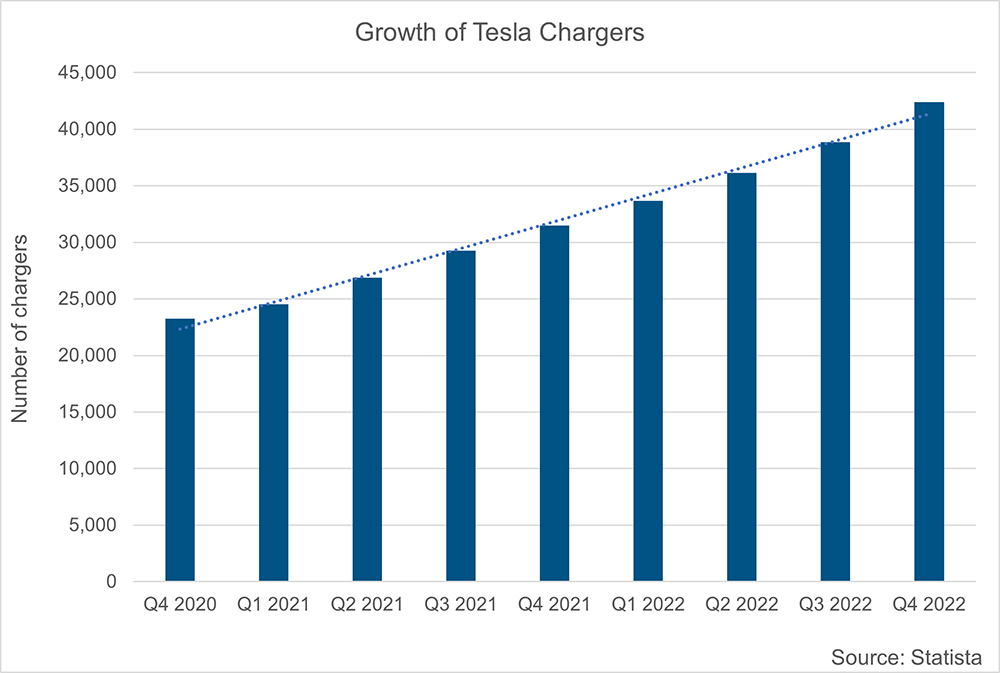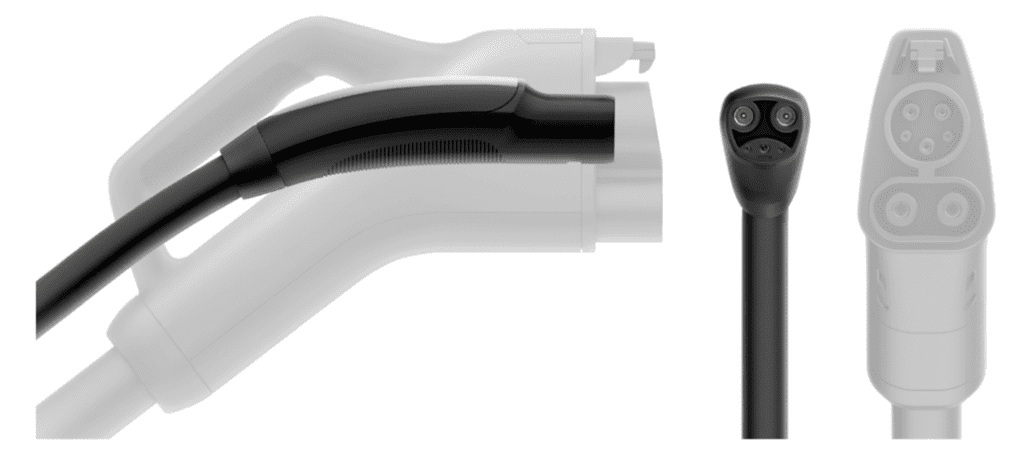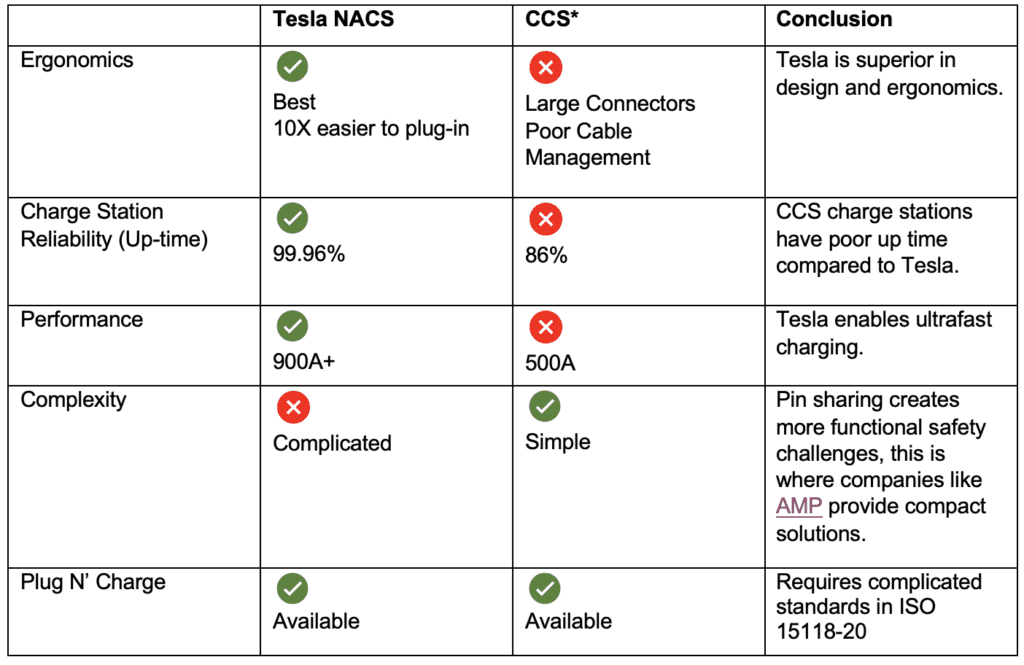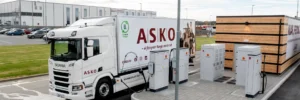
By Sanjay Sharma, www.amp.tech
Tesla has taken a huge leap in accelerating EV adoption and bringing the vision of clean energy closer, by announcing the opening of its EV connector design to the world. The announcement invites charging network operators and vehicle manufacturers to install the Tesla charging connector and charge port, now called the North American Charging Standard (NACS), on their equipment and vehicles.
Tesla Superchargers are designed to provide a quick and convenient way for Tesla owners to charge their vehicles while on long road trips or during extended stays away from home. Since then, Tesla has outgrown the number of charging stations and has made a strong network with uptime of more than 99%.
CCS, on the other hand, has been around for some time now and is a direct current (DC) fast charging protocol that is compliant with ISO-15118, present on vehicles produced by European and American car companies.
The question remains the same: Which charging standard to choose?
If you’re serious about electric vehicles, you know charging is a priority, and this is where NACS or CCS plays a vital role. NACS charging stations can now get your EV up to 350 kilowatts of charging power, matching CCS – that means your EV can go from almost empty to 80% charged in just 20-30 minutes! And if speed is important to you, then faster charging times are a game-changer.
How many chargers are there for NACS VS CCS?
As per a recent article published by Electrek, more than 25% of the CCS chargers in the Greater Bay Area were non-functional. A random evaluation of 10% of the EVSEs, approximately 8 days after the first evaluation, demonstrated no overall change in functionality. This level of functionality appears to conflict with the 95 to 98% uptime reported by the EV service providers (EVSPs) who operate the EV charging stations. In the same survey, only 4% of Tesla owners reported a major difficulty with the Tesla closed DCFC system.
Tesla has 17,740 fast charging ports in the United States, accounting for 62% of the total DC fast charging ports in the country, U.S. Department of Energy (DOE) data showed.

North American Charging Standard (NACS)
Tesla’s NACS is North America’s most proven and widely used charging standard. The NACS connector is an alternative to the CCS Combo connector and OEM giants like Ford are already in the pursuit to adopt it over CCS.
The company began installing Superchargers at strategic locations in 2012 and has continued to expand the network and performance over time. The Superchargers are designed to provide a quick and convenient way for Tesla owners to charge their vehicles while on long road trips or during extended stays away from home. Since then, Tesla has outgrown the number of charging stations and has made a strong network with uptime of more than 99%.
While detractors are quick to criticize Tesla for introducing yet another standard to the crowded charging standard arena, implying this move is intended as a shortcut for Tesla’s Supercharger network to participate in federal incentives, the potential impact of this announcement is much more subtle and lead to a much simpler EV charging ecosystem.
Combo Charge System (CCS)
When the CCS standard was introduced in 2011, AC charging was — and remains — dominated by the IEC 62196 Type 1 connector (also known as the SAE J1772 connector) in North America and Japan and the IEC 62196 Type 2 connector in Europe.
DC charging, which allows for far higher charge rates, was a mix of CHAdeMO from Japan and GB/T 20234.3 from China. Both these connectors require a separate inlet for AC and DC.
The authors of CCS wanted to establish a single inlet envelope that would reduce confusion and overhead while remaining backward compatible with J1772 (Type 1) and Type 2 connectors, which had established regional dominance. The proposed solution was to extend the Type 1/2 envelopes with a two-pin DC extension. The new Combo 1 and Combo 2 (and hence the name CCS was born) connectors both remained backward compatible and allow for the introduction of high-speed DC charging.
Why NACS?
The Tesla charge connector cleverly reuses the AC pins for DC charging, and communication is based on a single-wire CAN spec for DC use cases. Since all vehicles at Supercharger stations have historically been Tesla vehicles, use cases like Plug N’ Charge, were accomplished by far simpler means, enabled in part by the fact that Tesla has control over both the vehicle and the charger.
The result is a connector that is:
- Incredibly small
- Simple to use, and
- Part of an overall simpler ecosystem of chargers and compatibility concerns
- Performance advantages, due to tighter control of the connector and inlet design
Tesla’s NACS announcement signals the possibility that other vehicles and chargers can tap into this simplicity.

Below is a quick comparison table outlining the differentials between the two charging standards:

How did Tesla achieve the compact design of NACS?
They did this by sharing the AC and DC pins. This, however, creates complexity to the point that the highest safety rating (ASIL D) is applied to the hazard of connecting a 400V DC battery to a grid that can be as low as 120V AC. Complexity in Tesla NACS could be a bottleneck for its mass adoption. The interface between the charging station and the electric vehicle via NACS takes a variety of components and systems that work together to provide fast and reliable charging for electric vehicles. If this was to happen, your toaster oven will likely catch fire.
So how do we mitigate this hazard?
The hazard of energizing your home power grid with 400V DC will cause appliances to burn and is unique to NACS. Tesla uses a sophisticated Battery Management System (BMS) with smart charge port door controls and other vehicle software which has the appropriate hardware redundancy. Because quite a few BMSs and vehicle controllers are not easily modifiable, this isn’t a good option for some OEMs due to the complexities of re-validate a critical safety system. For those OEMs who have the capability of vertically integrating, or working with high-tech Tier 1 suppliers, NACS gives OEMs an advantage to the number one charging network.
from Charged EVs https://ift.tt/wsScfU3


No comments:
Post a Comment